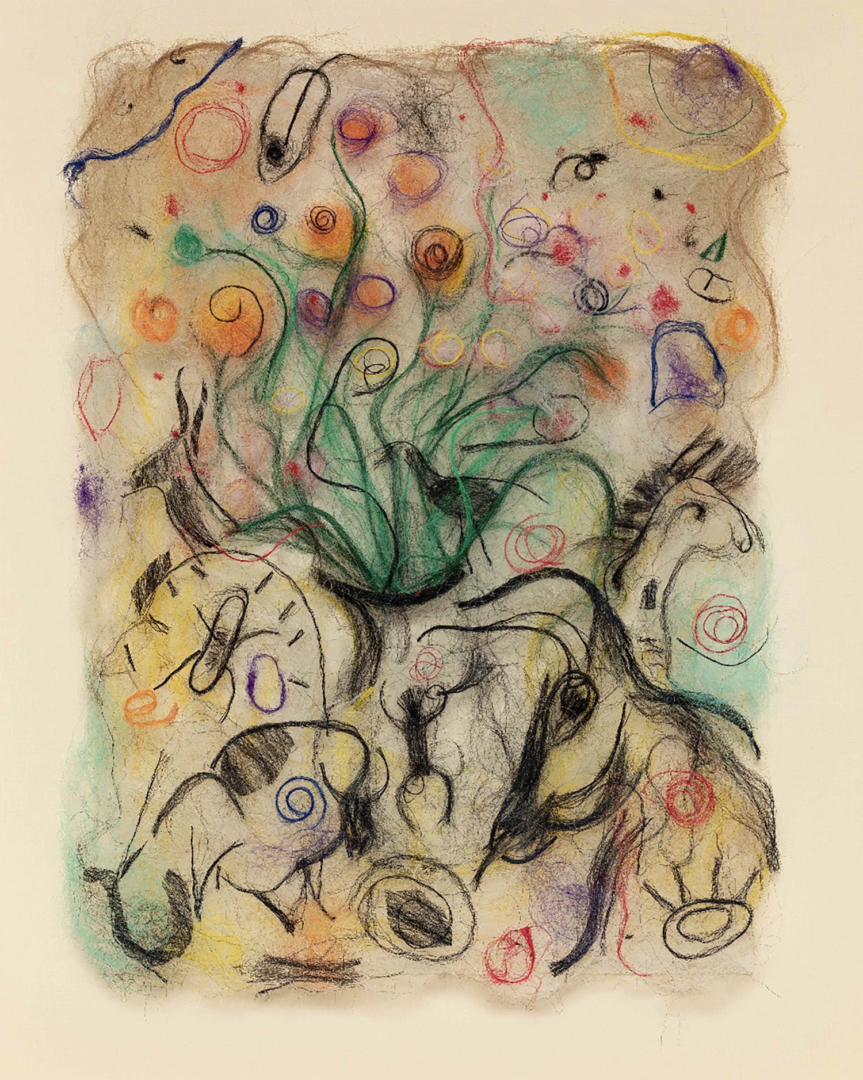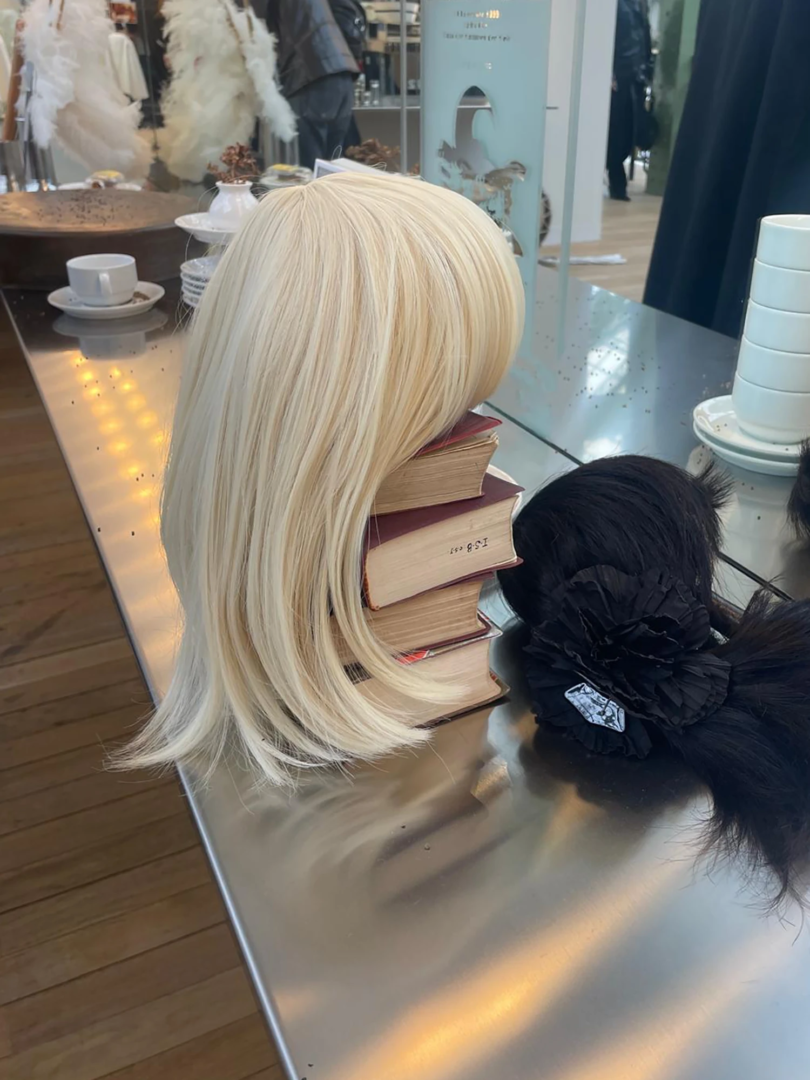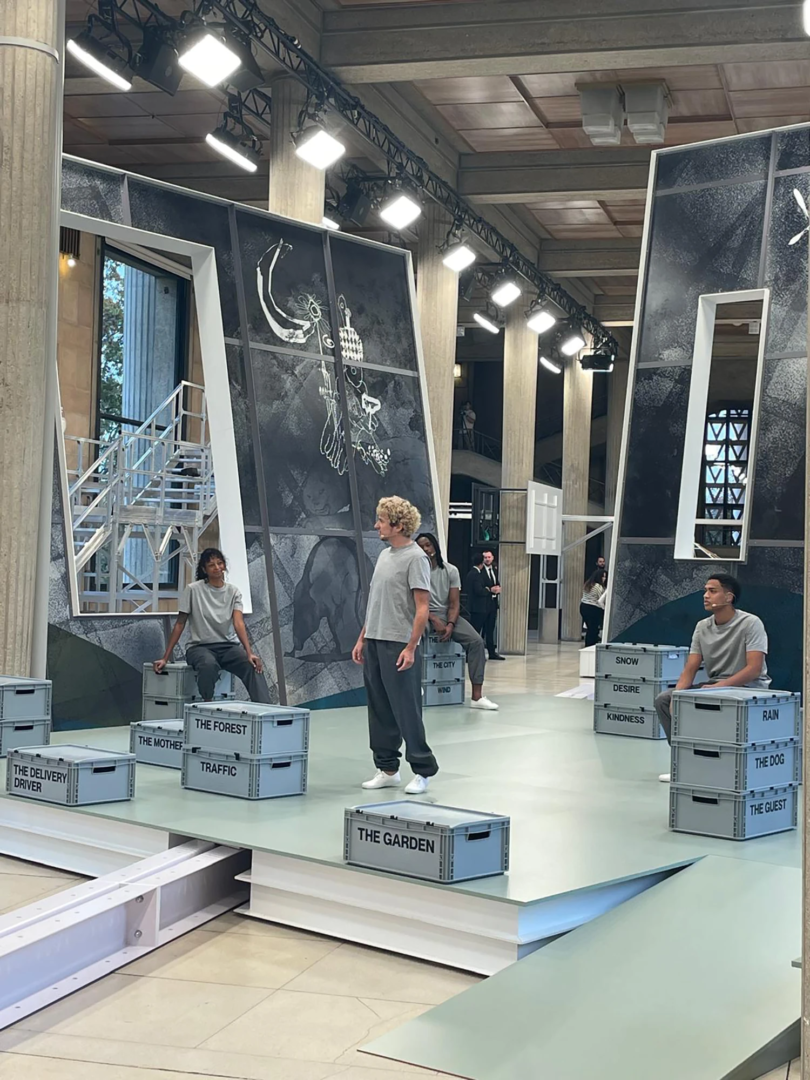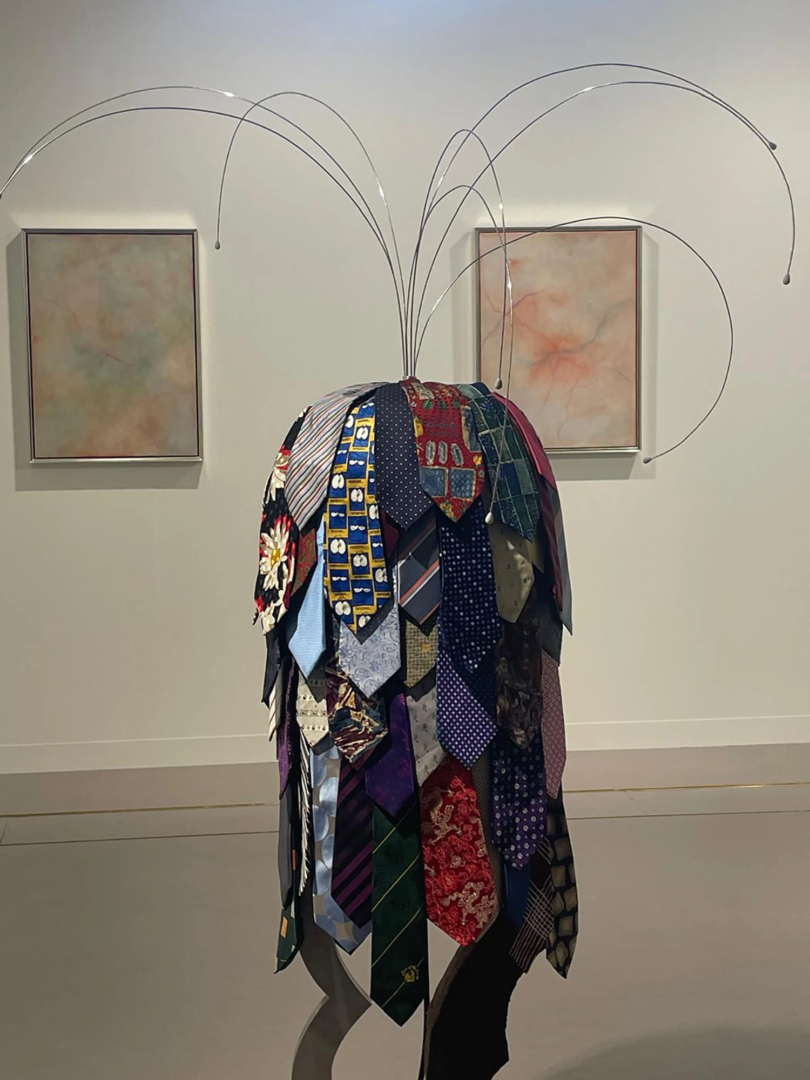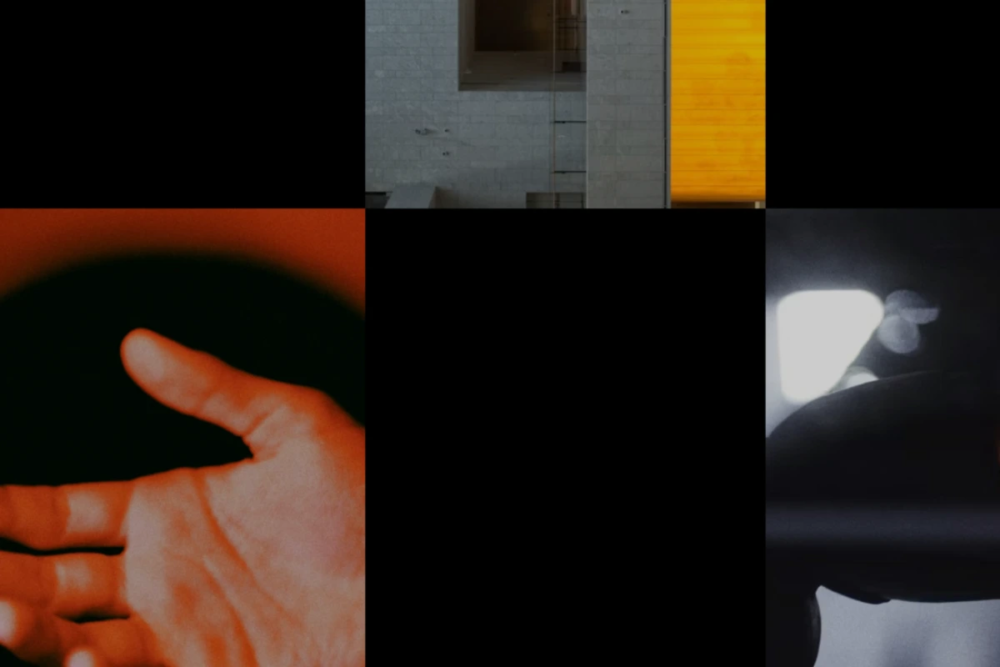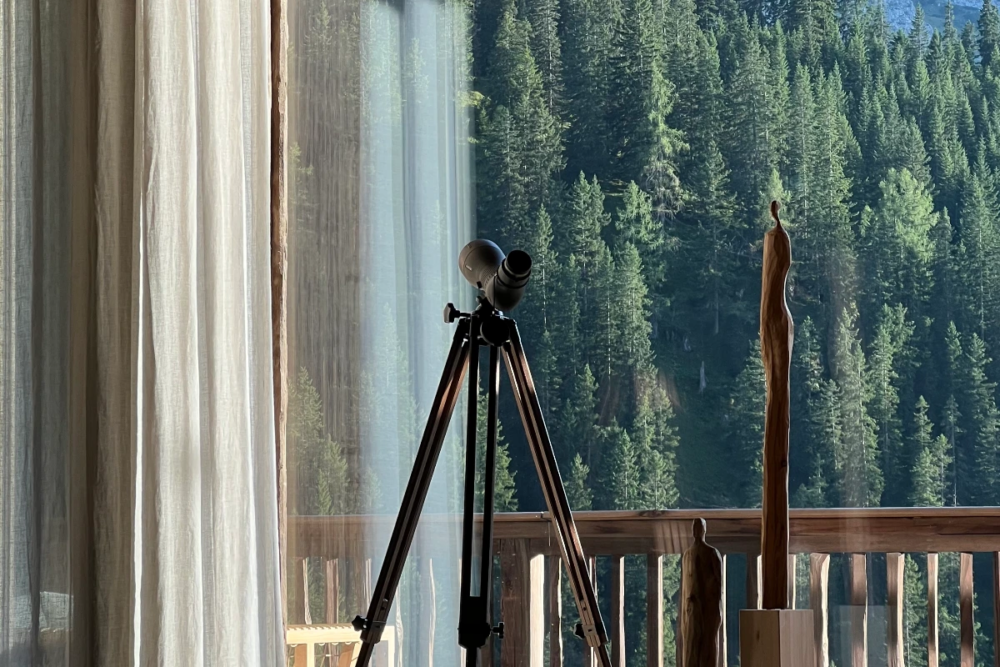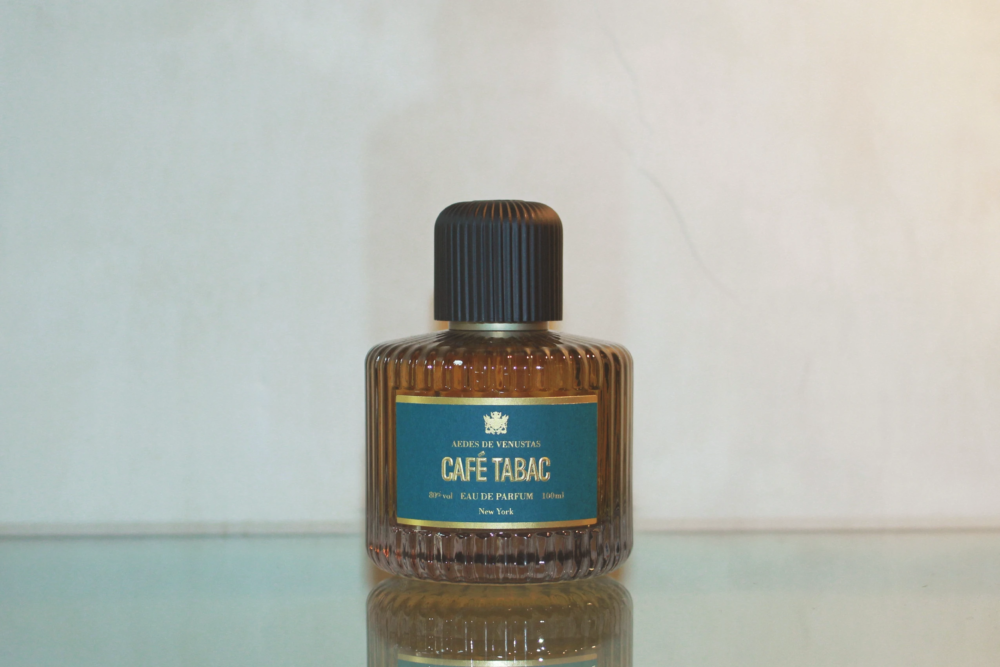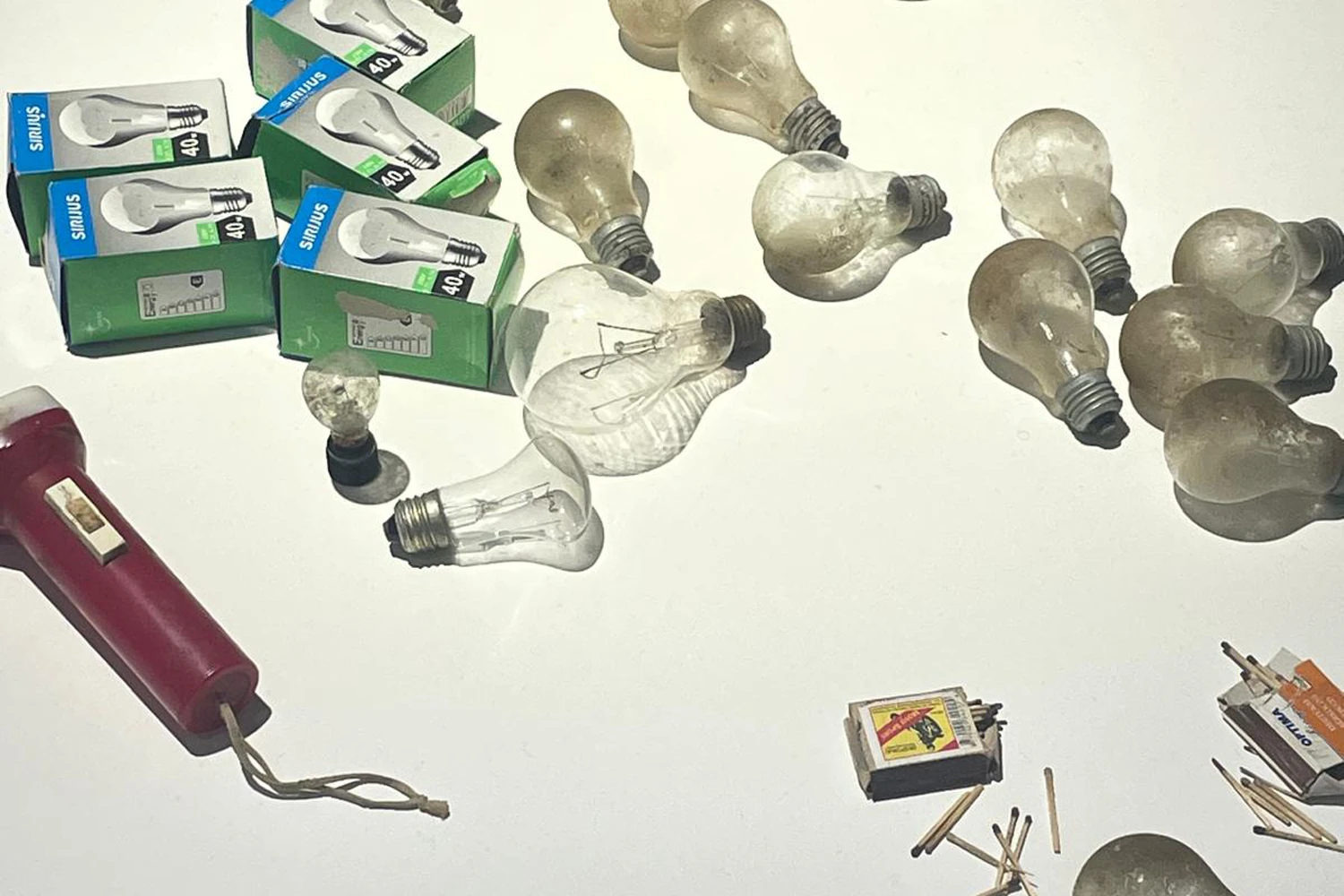
Found objects, fabrics, flesh: Art Basel Paris and the return of materiality
From digital drift to material presence. How everyday matter became contemporary meaning.
Art Basel Paris: a new stability
Art Basel Paris is the French capital’s flagship contemporary art fair, born in 2022 from the merger of the historic FIAC with the global Art Basel network. Held annually in the newly restored Grand Palais, the 2025 edition, running October 24 to 26, marks its first fully settled chapter.
This current edition, the fourth since its inception, marks a major coming-of-age for Art Basel Paris. After three years defined by constant adaptation and Olympic-related hurdles, the fair is finally and fully installed within the newly renovated Grand Palais, signifying what Director Clément Delépine calls its “first ‘normal’ edition.” Delépine, who will step down in November 2025, notes that this newfound stability has allowed the fair to consolidate its vision, transitioning beyond a simple marketplace to become a vital space for exploration, discovery, and exchange. This edition is doubly significant as the fair cements its permanent home while simultaneously refining its identity, successfully blending the structural integrity of Art Basel with the inherent flexibility of Parisian culture to create a truly “profoundly Parisian fair.”
The Art market’s new center of gravity
The fair’s consolidation coincides with a crucial moment for the global art market. While the high-end sector has seen contraction globally, Paris has strategically cemented its position as the undisputed European epicenter of the contemporary art market. This ascent is fueled by favorable French tax and auction regulations, the city’s profound institutional wealth, and the shift of major international players, including top-tier galleries and auction houses, from London to the continent following Brexit. Art Basel Paris serves as the ultimate catalyst and showcase for this concentration of power, providing a gravitational pull for global collectors and further solidifying the French capital’s commercial dominance.
Paris, an active participant
As Clément Delépine states, “Art Basel Paris isn’t Art Basel in Paris”. During the last three years, he has sought to construct a true identity: “The French way of operating has proven to be a strength, injecting flexibility into the established structure”. This shared responsibility and overarching narrative are forged through continuous collaboration with institutions like the Louvre, the Centre Pompidou, and the École de Beaux-Arts, confirming that “Paris has never been more desirable”.
This active partnership is reflected not only in the multifaceted public programming but also in the digital involvement of Parisian cultural figures, carefully selected by the fair. Through inside stories promoted on Art Basel Paris’s digital channels, figures like gallerist Cécile Fakhoury, artist Ibrahim Meïté Sikely, journalist Sophie Fontanel, and editor Thibaut Wychowanok share their personal style strategies, offering the perspective of the city’s insiders. The common theme in these narratives is the merging of fashion and art, where style acts as a “belonging code”: Fakhoury champions African designers, Sikely favors the “nerd” aesthetic of Supreme (seeing his art as an extension of his look), while Wychowanok compares the Grand Palais to an elite club where “the better you look, the more you see.” This constant focus on personal style and textiles hints not only at the fashion DNA of Paris, but also at a deeper engagement with physicality, a red thread of this year’s edition.
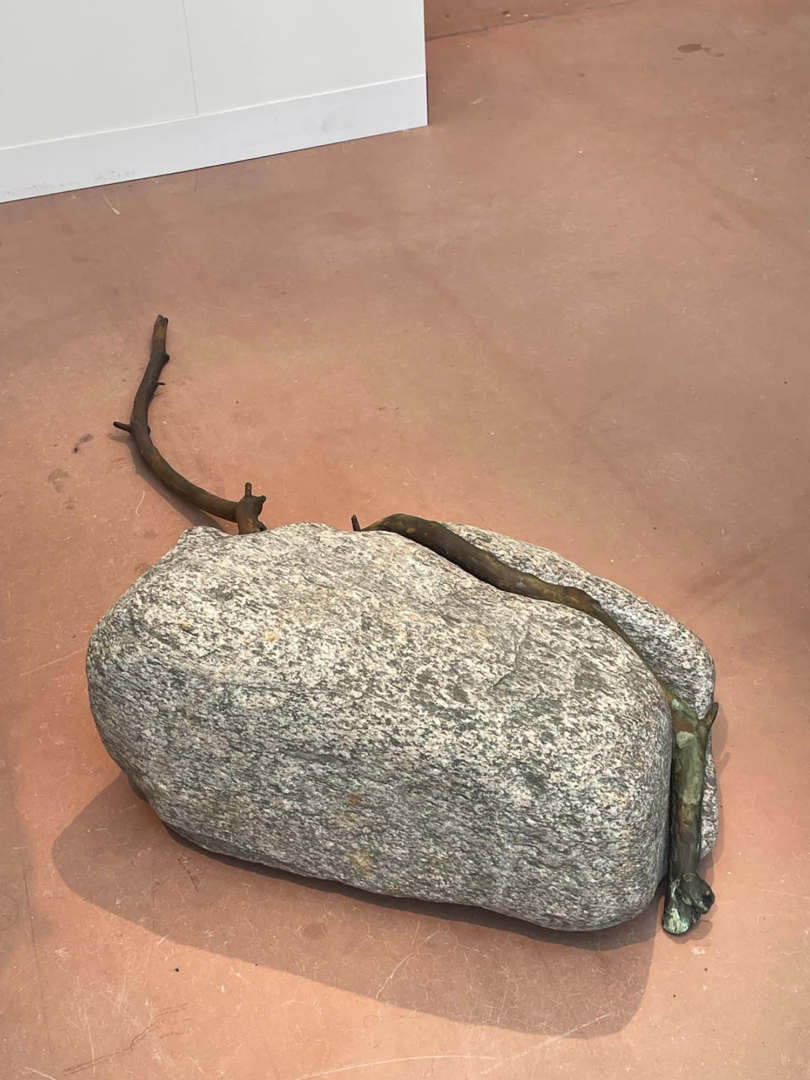
French roots, global reach: the public program
Extending the narrative from the local to the global, the fair’s research into its host city is accompanied by a carefully curated public program free and open to all, which will take over the French capital with exhibitions, monumental installations, as well as a series of talks and debates. Miu Miu is the Public Program Official Partner for the second consecutive year, and the program exemplifies the will to transform institutional but also public key places of the city into platforms for international experiment. Monumental interventions punctuate the urban landscape, most notably Alex Da Corte’s colossal, half-deflated Kermit the Frog inflatable, Kermit the Frog, Even, dominating Place Vendôme, and Ugo Rondinone’s towering blue-rock sculpture, the innocent, erected on the Parvis de l’Institut de France. Inside institutions, the program attempts to create dynamic juxtapositions, merging local with international talent.
Between Past and Future: Galeries, Emergence, Premise
The Art Basel Paris fair is structurally organized across three distinct exhibition sectors that collectively define its curatorial scope. The primary sector is Galeries, where established exhibitors present the comprehensive range of their programs, spanning both Modern and contemporary art. Looking toward the future, the Emergence sector is dedicated entirely to emerging galleries and artists, often showcasing focused solo presentations that champion new voices in the art world. Finally, the Premise sector presents highly unique curatorial proposals. This area distinguishes itself by deliberately challenging linear history, notably by including works created before 1900 alongside contemporary pieces, thereby fostering rich and unconventional dialogues across different eras of art.
What seemed to unify these disparate voices this year was a clear turn towards raw materials and a purpose economy in which scavenged stone, fabric, and repurposed objects carry meaning beyond decoration. Throughout the fair, both inside the Grand Palais and across the public program, artists and curators showed a shared interest in the physical: ready-mades, found objects, clothes and artifacts, and our bodily, tactile relation to matter were central to many presentations,
At Pace Gallery, Alicja Kwade’s stone installation functions as silent witnesses to geological time, interlacing human memory with the earth’s own archive. Galerie Allen Paris displayed Jason Dodge’s constellation of light bulbs, torches, and matches: everyday objects charged with latent energy, traces of past activity, waiting for a hand to ignite them. Rodrigo Matheus, at Fortes D’Aloia & Gabriel, wove processed acrylic threads into Grafite, a three-dimensional drawing that quivered like human hair, uncanny in its mimicry of touch. Fabric returned insistently also in the Emergence section: Meriem Bennani’s Cravate Monster at Galerie Ludovico Corsini, a monstrous tie sculpture, swollen and sentient, while Nefeli Papadimouli at Gallery The Pill draped actual tunics on the booth’s wall, their folds holding the ghost of a body. Installed as performative relic in the booth of Galerie DREI, empty wigs by artist Mira Mann stare at visitors, reminiscent of invisible past and future wearers.
This material awakening ran thus equally with a potent exploration of the body as site, agent, interlocutor. Works probed the intimate choreography between flesh and object: how we hold, wear, exchange, or inherit things; how function, memory, and desire are enacted through touch. This comes across as a peculiar shift, a reclamation of embodiment in an age of dematerialization, a quiet but insistent return to the haptic as a mode of understanding.

Towards new models of sustainability: material shifts
This newfound interest in a physical perception of the world extends into different outputs of the public program too. The first example outside the fair itself can be found at the historic Chapelle des Petits-Augustins des Beaux-Arts de Paris, where Russian artist Harry Nuriev, presented by Sultana, unveils an engaging and thought-provoking interactive installation titled Objets Trouvés (2025). This work transforms the venerable chapel into a site of radical exchange and reflection. Visitors are invited to participate in a symbolic barter system: they deposit personal belongings they no longer need into provided bins, and in turn, are free to take an object left by someone else. Objets Trouvés is a pointed critique of the “normalized absurdity of consumerism,” the overwhelming plenitude of “stuff” we relentlessly accumulate, yet it also gestures toward a purpose economy, where raw materials are not consumed but re-circulated, re-valued, re-lived. Nuriev’s setup formalizes this process of detachment and acquisition, with each unique transaction meticulously recorded in a dedicated certificate, ultimately to be compiled into a sleekly designed catalog.
Oh La La! A Fashion-Art convergence
Second example of a material reading of contemporary culture can be found in this year’s choice for the in-booth initiative Oh La La!, a special project where Art Basel Paris invites galleries to present new works at their booths on the Friday and Saturday of the fair. This year’s edition is art-directed by fashion expert and journalist Loïc Prigent, and the theme will be “À la mode” (In Fashion), challenging exhibitors to refresh their stands on Friday and Saturday with pieces that trace the rich conversation between the two fields, from textiles and tailoring to social codes and contemporary style. Here again we notice an interest towards physical objects, in this case read through the lens of fashion, in what seems to be a new approach towards art and reality, one that is contaminated by different disciplines in order to gain a better understanding of contemporaneity.
Helen Marten’s 30 Blizzards and the body as a vehicle of investigation
Last example of this increased interest towards new forms of physicality includes a new crucial focus on the body and its different declinations, like choreography and performance. This is exemplified by the highly anticipated presentation by artist Helen Marten at the Palais d’Iéna titled 30 Blizzards, organized by Miu Miu as Public Program Official Partner. The presentation is a cross-section of different disciplines, referencing moments of experience through childhood, community, sexuality, interiority, and loss. The exhibition is structured around a counterpoint between five sculptures and five videos, and a sequenced, live performance, conceived with opera director Fabio Cherstich and composer Beatrice Dillon, creating an immersive choreography of libretto, image, sound, and presence. The sculptures, which symbolize five stages of life from childhood to loss, are conglomerates composed of small objects, carefully crafted or sourced by Helen Marten herself. This material presence of what appear to be random sums of small everyday objects is put in physical dialogue with the performers, who move across them and interact with them, exploring a physical dimension. Here the body is used as a vessel of meaning, a tool for allegory and symbolism but also as a concrete, breathing archive: flesh that carries, collides with, and ultimately reclaims the weight of things.
Art Basel Paris as a sensory chronicle of contemporary culture
The general impression is that the fair has definitively shifted toward an approach that investigates materiality and embodiment in a profound way. Physical elements, from objects found and exchanged to fabrics, or stories of life and artistic creation approached through the lens of fashion, are focused on reuse and symbolic value. At the same time, attention toward performance, choreography, and the body hints toward a holistic new understanding of physicality as the essential subject of contemporary art. In this tactile turn, Art Basel Paris positions itself as a laboratory for the post-digital real, a space where the weight of raw materials, and the bodies that carry them, reassert their claim on contemporary meaning—quietly modeling a purpose economy where matter is not consumed, but re-inhabited.
